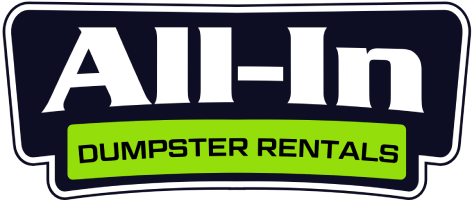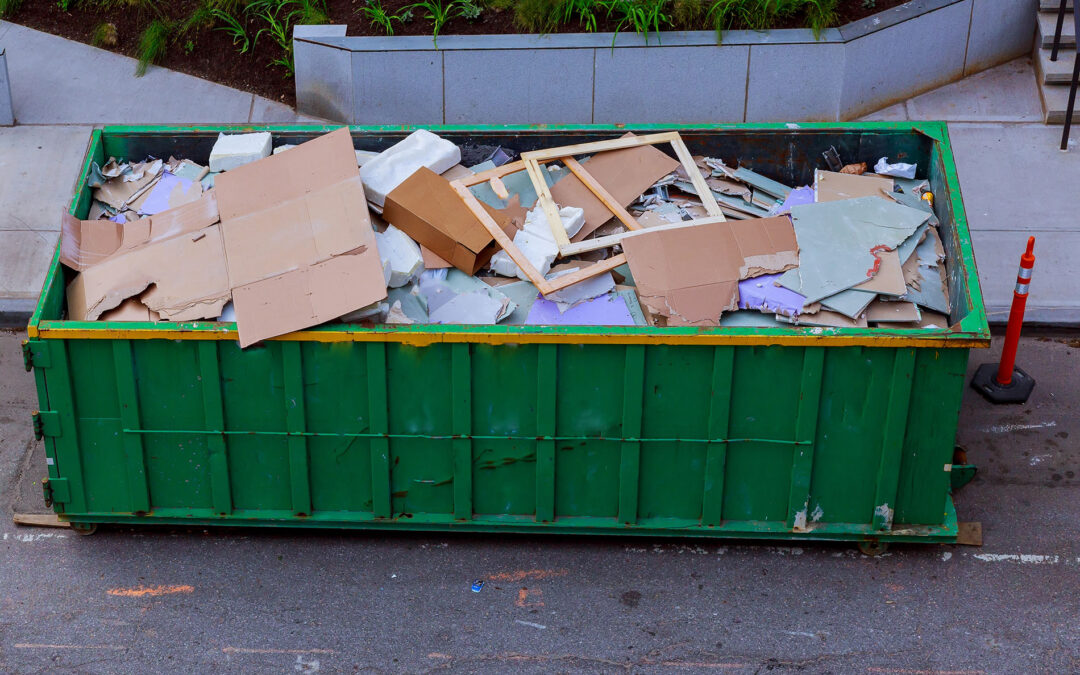Here in Western North Carolina, we face distinct waste disposal challenges that folks in flatter regions don’t encounter. Our hilly terrain, seasonal tourist influxes, and the growing popularity of home renovations in historic neighborhoods like Montford and West Asheville have created a need for more efficient dumpster use. Whether you’re clearing out after a harsh winter or preparing for one of our beautiful mountain summers, knowing how to maximize your rental is essential.
Understanding Dumpster Weight Distribution
Before diving into specific loading techniques, it’s crucial to understand the concept of weight distribution. Many Asheville homeowners make the mistake of loading all heavy items on one side, creating an imbalance that can make transportation dangerous and potentially lead to additional fees.
The mountainous terrain in our region means your dumpster might be sitting on an uneven surface to begin with. When you add poor weight distribution to this equation, you’re asking for trouble. The proper approach is to spread heavier items across the bottom of the container, creating a stable foundation for lighter materials on top.
This approach not only makes the dumpster safer to transport through our winding mountain roads but also helps you maximize the available space. When weight is distributed evenly, you can typically fit more material without exceeding weight limits – a common issue that leads to overage charges.
Start With a Strategic Plan
Before you throw the first item into your dumpster, take a moment to assess what you’ll be disposing of. Sort your waste into categories: heavy construction materials, medium-weight items, and light debris like cardboard or yard waste.
This planning phase is particularly important for those older Asheville homes undergoing renovation. These charming properties often yield surprising materials during demolition – from heavy old growth timber to brick and stone that weighs significantly more than modern building materials.
By categorizing your waste before loading, you can create a mental loading sequence that will help you maximize space. Think of it as playing a real-life game of Tetris where the goal is to create a level, compact load without any dangerous protrusions or imbalances.
The Bottom-Up Approach
When you’re ready to start loading, begin with your heaviest materials spread evenly across the bottom of the dumpster. Common heavy items in Asheville renovation projects include concrete, brick, stone, soil, and roofing materials – all of which should form your base layer.
For concrete and masonry waste, which is common in our older homes, break larger pieces down to manageable sizes. This not only makes them easier to handle but allows them to fit more compactly. Remember that the uneven weight distribution from one large concrete chunk can throw off your entire loading strategy.
After establishing your heavy base layer, transition to medium-weight items like wood, small appliances, and furniture. These materials help create a buffer between heavy items and lighter debris, preventing the lighter materials from being crushed and taking up less space as a result.
Make the Most of Awkward Spaces
One of the most overlooked aspects of efficient dumpster loading is utilizing those awkward spaces that form between larger items. In the nooks and crannies between furniture pieces or construction materials, you can tuck smaller items that would otherwise consume valuable space.
This approach is particularly valuable for Asheville homeowners dealing with yard waste alongside household items. Those small branches, plant pots, and garden debris can fill gaps between larger items rather than taking up prime real estate in your dumpster.
When working with mixed materials, always be mindful of prohibited items. Asheville has specific regulations about disposing of electronics, chemicals, and certain appliances. Keeping these out of your dumpster avoids potential fines and environmental harm to our beautiful mountain ecosystem.
Break Down and Flatten When Possible
The volume of space saved by breaking down items cannot be overstated. Disassembling furniture, breaking down boxes, and cutting longer items to fit flat against the dumpster walls can dramatically increase your usable space.
This practice is especially relevant for those working on Asheville’s many historic homes, where original woodwork and built-ins often need to be removed. By carefully dismantling rather than throwing in bulky pieces whole, you can sometimes fit the waste from an entire room into a space that might otherwise hold just a few items.
For cardboard and packaging materials, which are abundant in any home project, always break these down flat. A box that’s broken down takes up a fraction of the space of an intact one. This simple step can save you cubic yards of valuable dumpster space.
The Wall-Building Technique
Professional waste handlers often use what’s called the “wall-building technique” to maximize dumpster capacity. This approach involves placing flat items like doors, plywood, or paneling against the walls of the dumpster, creating a vertical framework.
For Asheville residents working on older homes with original materials like shiplap, bead board, or wood paneling, this technique is particularly useful. These materials can form perfect walls within your dumpster, creating a sturdy perimeter that helps contain smaller debris.
With your walls established, you can fill the center with loose items, essentially creating a box within a box. This technique not only maximizes space but helps prevent items from shifting during transport – an important consideration given our winding mountain roads.
Avoid the “Air Tax”
When loading a dumpster, you’re essentially paying for every cubic yard of space whether you use it effectively or not. Leaving large air pockets is like paying tax on nothing – it’s wasted money.
This concept is particularly important for Asheville’s seasonal residents or those preparing mountain cabins for rental season. When clearing out properties after winter or preparing for summer guests, compacting your waste efficiently ensures you’re not paying for empty space.
To minimize air pockets, periodically walk around your dumpster as you load it, looking for hollow spaces that could be filled with smaller items. Don’t be afraid to rearrange things if you notice inefficient use of space – the time spent reorganizing will pay off in avoiding the need for a second dumpster.
Mind the Weight Limits
While maximizing space is important, it’s equally crucial to stay within your dumpster’s weight limit. Exceeding weight limits is one of the most common ways Asheville homeowners end up with unexpected charges on their final bill.
Our region’s abundant rainfall can significantly add to dumpster weight. Materials like wood, drywall, and cardboard absorb moisture quickly in our humid climate, potentially adding hundreds of pounds to your load after a typical Asheville afternoon shower.
If rain is forecasted during your rental period, consider covering your dumpster with a tarp when not in use. Most local rental companies don’t automatically provide covers, but this simple step can prevent waterlogging and keep you within weight limits.
Local Considerations for Asheville Dumpster Rentals
Beyond the universal loading tips, there are some specific considerations for Asheville residents. Our city’s commitment to sustainability means many materials that might go into dumpsters elsewhere should actually be recycled or specially processed.
For example, the Buncombe County Landfill offers specific programs for handling electronics, appliances, and hazardous waste. Before loading these items into your dumpster, check whether they require special disposal methods. Not only is this better for our environment, but it can also free up valuable dumpster space for items that truly have no alternative disposal option.
Additionally, Asheville’s seasonal climate changes can affect your dumpster strategy. Summer thunderstorms can quickly fill an uncovered dumpster with rainwater, while winter ice can freeze materials to the dumpster floor, making them difficult to empty. Planning around these weather realities is part of efficient dumpster use in our mountain community.
Communication With Your Rental Provider
One often overlooked aspect of maximizing your dumpster rental is clear communication with your provider. Local companies familiar with Asheville’s unique challenges can offer valuable advice specific to your neighborhood and project type.
Before your dumpster is delivered, discuss your project with your provider. They can recommend the optimal size based on your specific needs and may offer suggestions about placement that account for our hilly terrain and sometimes narrow streets.
Most local providers are happy to share loading tips specific to your project. Whether you’re renovating a century-old Montford bungalow or clearing out a modern South Asheville home, their experience with similar projects can help you avoid common pitfalls.
When to Consider a Second Dumpster
Despite your best efforts at maximizing space, some projects simply require more capacity than initially estimated. Knowing when to call for a second dumpster rather than attempting to overload your first one is an important skill.
If you find yourself with more than a quarter of your waste still remaining after filling your dumpster to the fill line, it’s usually more cost-effective to order a second container rather than risking overage charges. Many Asheville providers offer discounts on second dumpsters for the same project.
Remember that overloaded dumpsters pose safety hazards during transport on our mountain roads and may violate local regulations. When in doubt, it’s better to distribute your waste properly between two containers than to create an unsafe load in one.
Final Loading Inspection
Before considering your dumpster fully loaded, perform a final inspection. Check that no items are protruding above the fill line, as these may need to be removed before transport. Verify that weight appears evenly distributed, with no obvious listing to one side.
For Asheville residents, this final check should also include ensuring the dumpster is properly secured if your property has any significant slope. Our hillside homes sometimes require additional measures to prevent dumpsters from shifting, especially after heavy rains have softened the ground.
By taking the time for this final assessment, you’ll avoid delays when your rental company comes to collect the dumpster and ensure you’re getting the maximum value from your rental without incurring additional fees.
Making Your Next Project Smoother
The knowledge you gain from properly loading your dumpster doesn’t just apply to your current project – it’s valuable for future waste management needs as well. Many Asheville homeowners find that once they master efficient loading techniques, they can complete projects with smaller dumpster sizes than they previously required.
Consider keeping notes about what worked well and what challenges you faced. These insights will prove invaluable for your next renovation, seasonal cleanup, or moving project. With each dumpster experience, you’ll become more adept at estimating your needs and maximizing your resources.
Remember that here in Asheville, our local waste management practices reflect our community’s values. By loading efficiently, you’re not just saving money – you’re helping reduce the environmental impact of waste transport through our beautiful mountain landscape.

